Föstudagur, 5. mars 2010
Heimur á heljarþröm - Yfirvofandi loftslagsbreytingar...
Undanfarið hafa verið í fréttum fjölmiðla heimsins ógnvænlegar lýsingar á ástandinu í lofthjúpi jarðar. Fyllsta ástæða er til að gefa þessu gaum, því ógnvaldurinn er allt um kring, ósýnilegur og undirförull 
Lesið meira í tilefni þess að helgin er í nánd... 
Hér fyrir neðan eru allmargar tilvitnanir í fréttir. Orðréttar á frummálinu.
The Arctic Ocean is warming up, icebergs are growing scarcer and in some places the seals are finding the water too hot,” according to a Commerce Department report published by the Washington Post. Writes the Post: “Reports from fishermen, seal hunters and explorers. . . all point to a radical change in climate conditions and . . . unheard-of temperatures in the Arctic zone . . . Great masses of ice have been replaced by moraines of earth and stones . . . while at many points well-known glaciers have entirely disappeared.”
Ljótt að lesa þessa frásögn sem er úr Washington Post 2. nóvember. Reyndar var það fyrir níu áratugum, eða árið 1922. Hér fyrir neðan eru fleiri úrklippur, allt frá því 1870, eða fyrir svo sem 130 árum. Nú hlýtur ástandið að vera virkilega slæmt fyrst það hefur varað svona lengi. Hvað getum við gert í málinu? Er ekki heimurinn á heljarþröm?
>>> Det er en frygtelig historie! ... Og det kom i avisen og det blev trykt og det er ganske vist:
En lille fjer kan nok blive til fem høns! <<<
“The climate of New-York and the contiguous Atlantic seaboard has long been a study of great interest. We have just experienced a remarkable instance of its peculiarity. The Hudson River, by a singular freak of temperature, has thrown off its icy mantle and opened its waters to navigation.” - New York Times, Jan. 2, 1870
“Is our climate changing? The succession of temperate summers and open winters through several years, culminating last winter in the almost total failure of the ice crop throughout the valley of the Hudson, makes the question pertinent. The older inhabitants tell us that the winters are not as cold now as when they were young, and we have all observed a marked diminution of the average cold even in this last decade.” - New York Times, June 23, 1890
“The question is again being discussed whether recent and long-continued observations do not point to the advent of a second glacial period, when the countries now basking in the fostering warmth of a tropical sun will ultimately give way to the perennial frost and snow of the polar regions.” - New York Times, Feb. 24, 1895
Professor Gregory of Yale University stated that “another world ice-epoch is due.” He was the American representative to the Pan-Pacific Science Congress and warned that North America would disappear as far south as the Great Lakes, and huge parts of Asia and Europe would be “wiped out.” - Chicago Tribune, Aug. 9, 1923
“The discoveries of changes in the sun’s heat and southward advance of glaciers in recent years have given rise to the conjectures of the possible advent of a new ice age” - Time Magazine, Sept. 10, 1923
Headline: “America in Longest Warm Spell Since 1776; Temperature Line Records a 25-year Rise” - New York Times, March 27, 1933
“America is believed by Weather Bureau scientists to be on the verge of a change of climate, with a return to increasing rains and deeper snows and the colder winters of grandfather’s day."- Associated Press, Dec. 15, 1934
Warming Arctic Climate Melting Glaciers Faster, Raising Ocean Level, Scientist Says - “A mysterious warming of the climate is slowly manifesting itself in the Arctic, engendering a “serious international problem,” Dr. Hans Ahlmann, noted Swedish geophysicist, said today. - New York Times, May 30, 1937
“Greenland’s polar climate has moderated so consistntly that communities of hunters have evolved into fishing villages. Sea mammals, vanishing from the west coast, have been replaced by codfish and other fish species in the area’s southern waters.” - New York Times, Aug. 29, 1954
“An analysis of weather records from Little America shows a steady warming of climate over the last half century. The rise in average temperature at the Antarctic outpost has been about five degrees Fahrenheit.” - New York Times, May 31, 1958
“Several thousand scientists of many nations have recently been climbing mountains, digging tunnels in glaciers, journeying to the Antarctic, camping on floating Arctic ice. Their object has been to solve a fascinating riddle: what is happening to the world’s ice? - New York Times, Dec. 7, 1958
“After a week of discussions on the causes of climate change, an assembly of specialists from several continents seems to have reached unanimous agreement on only one point: it is getting colder.” - New York Times, Jan. 30, 1961
“Like an outrigger canoe riding before a huge comber, the earth with its inhabitants is caught on the downslope of an immense climatic wave that is plunging us toward another Ice Age.” - Los Angeles Times, Dec. 23, 1962
“Col. Bernt Balchen, polar explorer and flier, is circulating a paper among polar specialists proposing that the Arctic pack ice is thinning and that the ocean at the North Pole may become an open sea within a decade or two.” - New York Times, Feb. 20, 1969
“By 1985, air pollution will have reduced the amount of sunlight reaching earth by one half ...” - Life magazine, January 1970
“In ten years all important animal life in the sea will be extinct. Large areas of coastline will have to be evacuated because of the stench of dead fish.” - Paul Ehrlich, Earth Day, 1970
“Civilization will end within 15 or 30 years unless immediate action is taken against problems facing mankind. We are in an environmental crisis which threatens the survival of this nation, and of the world as a suitable place of human habitation.” - Barry Commoner (Washington University), Earth Day, 1970
Because of increased dust, cloud cover and water vapor, “the planet will cool, the water vapor will fall and freeze, and a new Ice Age will be born.” - Newsweek magazine, Jan. 26, 1970
“The United States and the Soviet Union are mounting large-scale investigations to determine why the Arctic climate is becoming more frigid, why parts of the Arctic sea ice have recently become ominously thicker and whether the extent of that ice cover contributes to the onset of ice ages.” - New York Times, July 18, 1970
“In the next 50 years, fine dust that humans discharge into the atmosphere by burning fossil fuel will screen out so much of the sun’s rays that the Earth’s average temperature could fall by six degrees. Sustained emissions over five to 10 years, could be sufficient to trigger an ice age.” - Washington Post, July 9, 1971
“It’s already getting colder. Some midsummer day, perhaps not too far in the future, a hard, killing frost will sweep down on the wheat fields of Saskatchewan, the Dakotas and the Russian steppes. . . .” - Los Angles Times, Oct. 24, 1971
“An international team of specialists has concluded from eight indexes of climate that there is no end in sight to the cooling trend of the last 30 years, at least in the Northern Hemisphere.” - New York Times, Jan. 5, 1978
“A poll of climate specialists in seven countries has found a consensus that there will be no catastrophic changes in the climate by the end of the century. But the specialists were almost equally divided on whether there would be a warming, a cooling or no change at all.” - New York Times, Feb. 18, 1978
“A global warming trend could bring heat waves, dust-dry farmland and disease, the experts said… Under this scenario, the resort town of Ocean City, Md., will lose 39 feet of shoreline by 2000 and a total of 85 feet within the next 25 years.” - San Jose Mercury News, June 11, 1986
“Global warming could force Americans to build 86 more power plants—at a cost of $110 billion—to keep all their air conditioners running 20 years from now, a new study says...Using computer models, researchers concluded that global warming would raise average annual temperatures nationwide two degrees by 2010, and the drain on power would require the building of 86 new midsize power plants - Associated Press, May 15, 1989
“New York will probably be like Florida 15 years from now.”—St. Louis Post-Dispatch, Sept. 17, 1989 (Reyndar var það öfugt 20 árum síðar).
“[By] 1995, the greenhouse effect would be desolating the heartlands of North America and Eurasia with horrific drought, causing crop failures and food riots . . . [By 1996] The Platte River of Nebraska would be dry, while a continent-wide black blizzard of prairie topsoil will stop traffic on interstates, strip paint from houses and shut down computers . . . The Mexican police will round up illegal American migrants surging into Mexico seeking work as field hands.” - “Dead Heat: The Race Against the Greenhouse Effect,” Michael Oppenheimer and Robert H. Boyle, 1990.
“It appears that we have a very good case for suggesting that the El Ninos are going to become more frequent, and they’re going to become more intense and in a few years, or a decade or so, we’ll go into a permanent El Nino. So instead of having cool water periods for a year or two, we’ll have El Nino upon El Nino, and that will become the norm. And you’ll have an El Nino, that instead of lasting 18 months, lasts 18 years,” according to Dr. Russ Schnell, a scientist doing atmospheric research at Mauna Loa Observatory. - BBC, Nov. 7, 1997 (Næstu þrjú ár eftir 1998 réð La Nina ríkjum. Ekki El Nino).
“Scientists are warning that some of the Himalayan glaciers could vanish within ten years because of global warming. A build-up of greenhouse gases is blamed for the meltdown, which could lead to drought and flooding in the region affecting millions of people.”—The Birmingham Post, England, July 26, 1999
“This year (2007) is likely to be the warmest year on record globally, beating the current record set in 1998.” - ScienceDaily, Jan. 5, 2007
Arctic warming has become so dramatic that the North Pole may melt this summer (2008), report scientists studying the effects of climate change in the field. “We’re actually projecting this year that the North Pole may be free of ice for the first time [in history],” David Barber, of the University of Manitoba, told National Geographic News aboard the C.C.G.S. Amundsen, a Canadian research icebreaker. - National Geographic News, June 20, 2008
“So the climate will continue to change, even if we make maximum effort to slow the growth of carbon dioxide. Arctic sea ice will melt away in the summer season within the next few decades. Mountain glaciers, providing fresh water for rivers that supply hundreds of millions of people, will disappear - practically all of the glaciers could be gone within 50 years. . . Clearly, if we burn all fossil fuels, we will destroy the planet we know . . . We would set the planet on a course to the ice-free state, with sea level 75 metres higher. Climatic disasters would occur continually.” Dr. James Hansen (NASA GISS), The Observer, Feb. 15, 2009.
Úfff...
Fylgist nú vel með fjölmiðlunum. Hvaða fréttir af ógnvaldinum mikla flytja þeir okkur næst?
Eigum við ekki að kæla okkur aðeins. Má bjóða upp á ís?...
... og meðan við erum að kæla okkur, hvað þýðir Déjà vu sem við upplifðum?
Sjá útskýringu á okkar ylhýra hér.
Og svo ein klassísk frásögn í lokin um frétt sem er alveg sönn og kom meira að segja í blöðunum:
Eventyr af Hans Christian Andersen 1852
”Det er en frygtelig historie!” sagde en høne, og det omme i den kant af byen, hvor historien ikke var passeret. “Det er en frygtelig historie i hønsehuset! jeg tør ikke sove alene i nat! det er godt at vi er mange sammen på hjalet!” – Og så fortalte hun, så at fjerene rejste sig på de andre høns og hanen lod kammen falde. Det er ganske vist!
Men vi vil begynde med begyndelsen, og den var i den anden kant af byen i et hønsehus. Solen gik ned og hønsene fløj op; en af dem, hun var hvidfjeret og lavbenet, lagde sine reglementerede æg og var, som høne, respektabel i alle måder; idet hun kom til hjals, pillede hun sig med næbbet, og så faldt der en lille fjer af hende.
“Der gik den!” sagde hun, “jo mere jeg piller mig, des dejligere bliver jeg nok!” Og det var nu sagt i munterhed, for hun var det muntre sind mellem de høns, i øvrigt, som sagt, meget respektabel; og så sov hun.
Mørkt var det rundt om, høne sad ved høne og den, som sad hende nærmest, sov ikke; hun hørte og hun ikke hørte, som man jo skal i denne verden, for at leve i sin gode rolighed; men sin anden naboerske måtte hun dog sige det: “Hørte du hvad her blev sagt? Jeg nævner ingen, men der er en høne, som vil plukke sig, for at se godt ud! var jeg hane, ville jeg foragte hende!”
Og lige oven over hønsene sad uglen med uglemand og uglebørn; de har skarpe ører i den familie, de hørte hvert ord, som nabohønen sagde, og de rullede med øjnene og uglemor viftede sig med vingerne: “Hør bare ikke efter! men I hørte sagtens hvad der blev sagt? Jeg hørte det med mine egne ører, og man skal høre meget før de falder af! Der er en af hønsene, som i den grad har glemt, hvad der skikker sig en høne, at hun sidder og piller alle fjerene af sig og lader hanen se på det!”
“Prenez garde aux enfants!” sagde uglefader, “det er ikke noget for børnene!”
“Jeg vil dog fortælle genbougle det! det er sådan en agtværdig ugle i omgang!” og så fløj mutter.
“Hu-hu! uhuh!” tudede de begge to og det lige ned i genboens dueslag til duerne. “Har I hørt det! har I hørt det! uhuh! der er en høne, som har plukket alle fjerene af sig for hanens skyld! hun fryser ihjel, om hun ikke er det, uhuh!”
“Hvor? hvor?” kurrede duerne!
“I genboens gård! jeg har så godt som selv set det! det er næsten en upassende historie at fortælle! men det er ganske vist!”
“Tror, tror hvert evige ord!” sagde duerne, og kurrede ned til deres hønsegård: “Der er en høne, ja der er somme der siger, at der er to, som har plukket alle fjerene af sig, for ikke at se ud som de andre og således vække hanens opmærksomhed. Det er et voveligt spil, man kan forkøle sig og dø af feber, og de er døde begge to!”
“Vågn op! vågn op!” galede hanen og fløj op på plankeværket, søvnen sad ham endnu i øjnene, men han galede alligevel: “Der er tre høns døde af ulykkelig kærlighed til en hane! de havde plukket alle fjerene af sig! det er en fæl historie, jeg vil ikke beholde den, lad gå videre!”
“Lad gå videre!” peb flagermusene, og hønsene klukkede og hanerne galede: “Lad gå videre! lad gå videre!” og så fór historien fra hønsehus til hønsehus og til sidst tilbage til stedet, hvorfra den egentlig var gået ud.
“Der er fem høns,” hed det, “som alle har plukket fjerene af sig, for at vise, hvem af dem der var blevet magrest af kærestesorg til hanen, og så hakkede de hinanden til blods og faldt døde ned, til skam og skændsel for deres familie og til stort tab for ejeren!”
Og hønen, som havde mistet den løse lille fjer, kendte naturligvis ikke sin egen historie igen, og da hun var en respektabel høne, så sagde hun: Jeg foragter de høns! men der er flere af den slags! Sligt skal man ikke fortie, og jeg vil gøre mit til, at den historie kan komme i avisen, så går den landet over; det har de høns fortjent og familien med!“
Og det kom i avisen og det blev trykt og det er ganske vist: En lille fjer kan nok blive til fem høns!

Meginflokkur: Vísindi og fræði | Aukaflokkar: Spaugilegt, Stjórnmál og samfélag, Umhverfismál | Breytt 9.3.2010 kl. 19:36 | Facebook
Um bloggið
Ginnungagap
Ýmislegt
Loftslag
Teljari
Álverð
Sólin í dag:
(Smella á mynd)
.
Olíuverðið í dag:
Nýjustu færslur
- Kínverskur loftbelgur yfir Ameríku, og Amerískur belgur yfir ...
- Vísindavefurinn: Getum við seinkað klukkunni á Íslandi og fen...
- Sjálfstæðisflokkurinn með tæplega 19% meira fylgi en Samfylki...
- Bjarni Sigurðsson harmonikkusnillingur frá Geysi. Fáein orð...
- Hvers vegna valdi Apple ekki Ísland fyrir gagnaver...?
Heimsóknir
Flettingar
- Í dag (27.4.): 0
- Sl. sólarhring: 7
- Sl. viku: 45
- Frá upphafi: 0
Annað
- Innlit í dag: 0
- Innlit sl. viku: 30
- Gestir í dag: 0
- IP-tölur í dag: 0
Uppfært á 3 mín. fresti.
Skýringar
Tenglar
Tenglar
Ýmsar vefsíður
- Efnisyfirlit pistla
- Lofthiti - Sjávarstaða - Hafís - Sólvirkni... Beintengdir ferlar
- Club du Soleil Greinar um samaspil sólar og veðurfars
- Stjörnufræðivefurinn
- Astronomy Picture of the Day
- Climate4you
- Watts Up With That?
- World Climate Report
- CO2 Science
- The Reference Frame
- Climate-Audit
- ICECAP
- The Air Went
- Science Sceptical Blog
- Roy Spencer
- Friends of Sience
- Prometheus
- Öldur aldanna. Sjaldan er ein báran stök - einnig í veðurfari? (2003) Vefsíða ÁHB
- Gróðurhúsaáhrif eða eðlilegar sveiflur í virkni sólar? (Grein í Lesbók Mbl. 20. júní 1998) Höfundur Ágúst H. Bjarnason
- Er jörðin að hitna?-Ekki er allt sem sýnist (1998) Vefsíða ÁHB
Uppskriftir
Ýmsar mataruppskriftir
Myndaalbúm
Bloggvinir
-
 majab
majab
-
 ragu
ragu
-
 amadeus
amadeus
-
 andres08
andres08
-
 apalsson
apalsson
-
 asabjorg
asabjorg
-
 askja
askja
-
 astromix
astromix
-
 baldher
baldher
-
 biggibraga
biggibraga
-
 bjarkib
bjarkib
-
 bjarnijonsson
bjarnijonsson
-
 bjarnimax
bjarnimax
-
 bjorn-geir
bjorn-geir
-
 blindur
blindur
-
 bofs
bofs
-
 brandarar
brandarar
-
 daliaa
daliaa
-
 darwin
darwin
-
 duddi9
duddi9
-
 ea
ea
-
 egillsv
egillsv
-
 einari
einari
-
 einarstrand
einarstrand
-
 elinora
elinora
-
 elvira
elvira
-
 emilhannes
emilhannes
-
 esv
esv
-
 eyjapeyji
eyjapeyji
-
 fhg
fhg
-
 finder
finder
-
 finnur
finnur
-
 fjarki
fjarki
-
 flinston
flinston
-
 frisk
frisk
-
 gattin
gattin
-
 geiragustsson
geiragustsson
-
 gillimann
gillimann
-
 gretaro
gretaro
-
 gthg
gthg
-
 gudmbjo
gudmbjo
-
 gudni-is
gudni-is
-
 gummibraga
gummibraga
-
 gun
gun
-
 gutti
gutti
-
 haddi9001
haddi9001
-
 halldorjonsson
halldorjonsson
-
 halldors
halldors
-
 hlini
hlini
-
 hof
hof
-
 hordurhalldorsson
hordurhalldorsson
-
 hreinsamviska
hreinsamviska
-
 hronnsig
hronnsig
-
 hugdettan
hugdettan
-
 icekeiko
icekeiko
-
 ingibjorgelsa
ingibjorgelsa
-
 jakobbjornsson
jakobbjornsson
-
 jakobk
jakobk
-
 johannesthor
johannesthor
-
 johnnyboy99
johnnyboy99
-
 jonaa
jonaa
-
 jonasgunnar
jonasgunnar
-
 jonmagnusson
jonmagnusson
-
 jonpallv
jonpallv
-
 jonthorolafsson
jonthorolafsson
-
 juliusvalsson
juliusvalsson
-
 karljg
karljg
-
 katrinsnaeholm
katrinsnaeholm
-
 kikka
kikka
-
 kje
kje
-
 klarak
klarak
-
 kolbrunb
kolbrunb
-
 krissiblo
krissiblo
-
 ksh
ksh
-
 kt
kt
-
 lehamzdr
lehamzdr
-
 liljabolla
liljabolla
-
 lillagud
lillagud
-
 lindalea
lindalea
-
 lucas
lucas
-
 maeglika
maeglika
-
 maggij
maggij
-
 maggiraggi
maggiraggi
-
 marinomm
marinomm
-
 martasmarta
martasmarta
-
 marzibil
marzibil
-
 mberg
mberg
-
 midborg
midborg
-
 minos
minos
-
 morgunbladid
morgunbladid
-
 mosi
mosi
-
 mullis
mullis
-
 naflaskodun
naflaskodun
-
 nimbus
nimbus
-
 nosejob
nosejob
-
 omarbjarki
omarbjarki
-
 ormurormur
ormurormur
-
 palmig
palmig
-
 perlaoghvolparnir
perlaoghvolparnir
-
 peturmikli
peturmikli
-
 photo
photo
-
 possi
possi
-
 prakkarinn
prakkarinn
-
 raggibjarna
raggibjarna
-
 rattati
rattati
-
 ravenyonaz
ravenyonaz
-
 redlion
redlion
-
 rs1600
rs1600
-
 rynir
rynir
-
 saemi7
saemi7
-
 sesseljamaria
sesseljamaria
-
 sigfus
sigfus
-
 sigurgeirorri
sigurgeirorri
-
 sjalfstaedi
sjalfstaedi
-
 sjerasigvaldi
sjerasigvaldi
-
 skari60
skari60
-
 skulablogg
skulablogg
-
 sleggjudomarinn
sleggjudomarinn
-
 stebbix
stebbix
-
 steinibriem
steinibriem
-
 steinnhaf
steinnhaf
-
 stinajohanns
stinajohanns
-
 stjornuskodun
stjornuskodun
-
 storibjor
storibjor
-
 straitjacket
straitjacket
-
 summi
summi
-
 tannibowie
tannibowie
-
 thil
thil
-
 thjodarskutan
thjodarskutan
-
 throsturg
throsturg
-
 toro
toro
-
 tryggvigunnarhansen
tryggvigunnarhansen
-
 valdimarjohannesson
valdimarjohannesson
-
 valdinn
valdinn
-
 vefritid
vefritid
-
 vey
vey
-
 vidhorf
vidhorf
-
 vig
vig
-
 visindin
visindin
-
 vulkan
vulkan
-
 kristjan9
kristjan9
-
 arkimedes
arkimedes
-
 kliddi
kliddi
-
 eliasbe
eliasbe
Eldri færslur
- Febrúar 2023
- Janúar 2019
- Maí 2018
- Júlí 2017
- Maí 2017
- Febrúar 2017
- Janúar 2017
- Nóvember 2016
- Október 2016
- September 2016
- Júlí 2016
- Apríl 2016
- Mars 2016
- Febrúar 2016
- Janúar 2016
- Desember 2015
- Nóvember 2015
- Október 2015
- Ágúst 2015
- Júní 2015
- Maí 2015
- Apríl 2015
- Mars 2015
- Febrúar 2015
- Janúar 2015
- Desember 2014
- Nóvember 2014
- Október 2014
- September 2014
- Ágúst 2014
- Júlí 2014
- Júní 2014
- Maí 2014
- Apríl 2014
- Mars 2014
- Febrúar 2014
- Janúar 2014
- Desember 2013
- Nóvember 2013
- Október 2013
- September 2013
- Ágúst 2013
- Júlí 2013
- Júní 2013
- Maí 2013
- Apríl 2013
- Mars 2013
- Febrúar 2013
- Janúar 2013
- Desember 2012
- Nóvember 2012
- September 2012
- Ágúst 2012
- Júlí 2012
- Júní 2012
- Maí 2012
- Apríl 2012
- Mars 2012
- Febrúar 2012
- Janúar 2012
- Desember 2011
- Nóvember 2011
- Október 2011
- September 2011
- Ágúst 2011
- Júlí 2011
- Júní 2011
- Apríl 2011
- Mars 2011
- Febrúar 2011
- Janúar 2011
- Desember 2010
- Nóvember 2010
- Október 2010
- September 2010
- Ágúst 2010
- Júlí 2010
- Júní 2010
- Maí 2010
- Apríl 2010
- Mars 2010
- Febrúar 2010
- Janúar 2010
- Desember 2009
- Nóvember 2009
- Október 2009
- September 2009
- Ágúst 2009
- Júlí 2009
- Júní 2009
- Maí 2009
- Apríl 2009
- Mars 2009
- Febrúar 2009
- Janúar 2009
- Desember 2008
- Nóvember 2008
- Október 2008
- September 2008
- Ágúst 2008
- Júlí 2008
- Júní 2008
- Maí 2008
- Apríl 2008
- Mars 2008
- Febrúar 2008
- Janúar 2008
- Desember 2007
- Nóvember 2007
- Október 2007
- September 2007
- Ágúst 2007
- Júlí 2007
- Júní 2007
- Apríl 2007
- Mars 2007
- Febrúar 2007
- Janúar 2007
- Desember 2006
- Nóvember 2006
- Október 2006
- September 2006
Færsluflokkar
- Bloggar
- Bækur
- Dægurmál
- Evrópumál
- Ferðalög
- Fjármál
- Fjölmiðlar
- Heilbrigðismál
- Heimspeki
- Íþróttir
- Kjaramál
- Kvikmyndir
- Lífstíll
- Ljóð
- Löggæsla
- Mannréttindi
- Matur og drykkur
- Menning og listir
- Menntun og skóli
- Samgöngur
- Sjónvarp
- Spaugilegt
- Spil og leikir
- Stjórnmál og samfélag
- Sveitarstjórnarkosningar
- Tónlist
- Trúmál
- Trúmál og siðferði
- Tölvur og tækni
- Umhverfismál
- Utanríkismál/alþjóðamál
- Vefurinn
- Viðskipti og fjármál
- Vinir og fjölskylda
- Vísindi og fræði

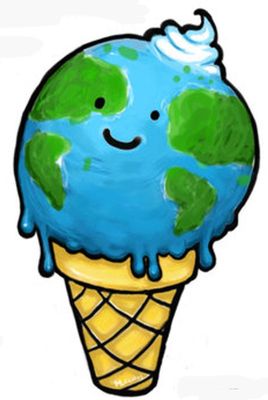

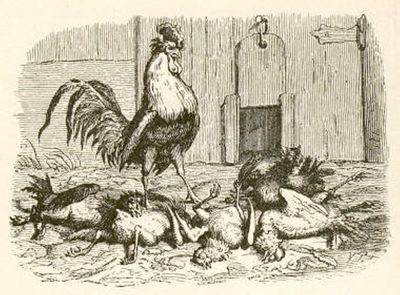


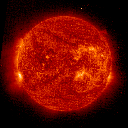
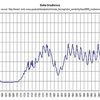
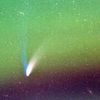
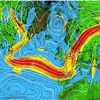
Athugasemdir
Hvah... ertu hættur að flytja okkur fréttir af yfirvofandi kólnun?
Hérna eru nokkrar umfjallanir þínar um hættuna á yfirvofandi kólnun:
Júní 1998: Gróðurhúsaáhrif eða eðlilegar sveiflur í virkni sólar?
September 2003: Öldur aldanna. Sjaldan er ein báran stök - einnig í veðurfari?
Föstudagur, 14. mars 2008: Veruleg kólnun og skíðasnjór á næstu árum? - Ekki útilokað að svo verði
Fimmtudagur, 1. október 2009: Geimgeislar hafa aukist verulega undanfarið. Boðar það kólnandi veðurfar samkvæmt kenningu Svensmarks...?
Miðað við hvað þú ert uggandi yfir yfirvofandi kólnun og hefur fjallað mikið um það, þá er þetta undarleg færsla hjá þér. Hræðsluáróður þinn varðandi kólnun á sér langa sögu sem ekki hefur verið studd með almennilegum gögnum. Oftast heldur þú því fram að hlýnun undanfarna áratugi hafi verið af völdum sólar og kólnun fylgi í kjölfarið, nú hefur sólin verið í niðursveiflu frá miðjum síðasta áratug en hitinn haldist áfram að aukast - hvað segir það um þínar umfjallanir?
Árlegt hnattrænt hitastig jarðar (þunn rauð lína) með 11 ára meðatalslínu (þykk rauð lína). Hitastig frá NASA GISS. Árleg sólvirkni – TSI (þunn blá lína) með 11 ára meðaltalslínu TSI (þykk blá lína). TSI frá 1880-1978 frá Solanki. TSI frá 1979-2009 frá PMOD.
Að vísa í gamlar fréttir því til stuðnings að allt tal um hlýnun eða hugsanlega hlýnun sé orðum ofaukið - er í besta falli barnalegt - því þú veist að þekkingin nú er mun meiri en hún var í lok nítjándu aldar. Í versta falli er það þó dæmigerð tilraun til að breiða yfir það að við þurfum að gera eitthvað í málunum til að vinna bug á hlýnun jarðar - sem er af mannavöldum (sjá Er jörðin að hlýna?, Veldur CO2 hlýnuninni? og Er aukning á CO2 af mannavöldum?).
En til að halda því til haga - þá eiga vísindamenn ekki von á neinu kuldatímabili - til þess eru áhrif gróðurhúsalofttegundanna orðin of sterk - þau yfirskyggja orðið þær náttúrulegu sveiflur sem koma frá sólinni: Sjá Mýta: Lítil Ísöld eða kuldaskeið Ísaldar er á næsta leiti
Höskuldur Búi Jónsson, 5.3.2010 kl. 08:53
Ég gerði mistök í langlokunni hér fyrir ofan: "nú hefur sólin verið í niðursveiflu frá miðjum síðasta áratug " á að vera - "nú hefur sólin verið í niðursveiflu frá miðri síðustu öld" - Smá munur
Höskuldur Búi Jónsson, 5.3.2010 kl. 08:56
Kæri vinur Höski Búi.
Við skulum bara vera rólegir, gæða okkur á ísnum sem er í boði, og njóta ævintýris HC Andersen sem hann samdi aðeins 18 árum áður en fréttin í The Washington Post birtist 1870. Alveg er það makalaust hve tíminn líður hratt, þetta gæti nefnilega hafa verið í gær...
Ég get fullvissað þig um það að ekkert er að óttast. Ummælin mín um ógnvaldinn ógurlega og ósýnilega sem læðist undirförull allt um kring eru nefnilega orðum aukin í tilefni þess að helgin er að nálgast eins og óð fluga.
Njóttu lífsins kæri vinur!
Ágúst H Bjarnason, 5.3.2010 kl. 09:14
Kæri Ágúst
Vandamálið hverfur ekki við það að klippa og afrita samhengislausar úrklippur úr blaðagreinum. Ef svo væri, þá væru störf vísindamanna létt...
Njóttu helgarinnar
Sveinn Atli Gunnarsson, 5.3.2010 kl. 12:48
Við skulum bara flokka þennan pistil undir gáskafullt föstudagsgrín meðan við bíðum eftir því hvernig íslenska náttúran greiðir atkvæði í þjóðaratkvæðagreiðslunni.
Nú er víst allt að verða vitlaust undir Eyjafjallajökli og viðbúnaður verið aukinn....
Spennan magnast... Ekki bara í iðrum jarðar...
Ágúst H Bjarnason, 5.3.2010 kl. 13:05
Það verður spennandi að fylgjast með gosstöðvunum, kannski erlendir blaðamenn fái tækifæri á að sjá náttúru Íslands í ham á meðan þeir fylgjast með íbúum landsins flykkjast í kjörklefana
Sveinn Atli Gunnarsson, 5.3.2010 kl. 13:24
Þeir vakta þig eins og híenur, Ágúst
Gunnar Th. Gunnarsson, 5.3.2010 kl. 16:57
Gunnar: Ég reyni að vakta þig líka - gleymi því þó alltof oft Hefurðu nokkuð verið að gera af þér?
Hefurðu nokkuð verið að gera af þér?
Höskuldur Búi Jónsson, 5.3.2010 kl. 19:53
Nei, ég hef verið voða þægur
Gunnar Th. Gunnarsson, 5.3.2010 kl. 22:44
Sjálfsagt er það þá bara ég sem hef verið óþekkur. Svona prakkaraskapur að vera að birta eldgamlar fréttir af yfirvofandi hita- eða kuldaskeiðum og ólátum í hænsnakofa er auðvitað óafsakanlegur. Og hana-nú!
Ágúst H Bjarnason, 6.3.2010 kl. 08:09
Ágúst; þegar færslurnar hafa þann tilgang að þyrla ryki í augu fólks varðandi heila grein vísinda, með sérvöldum (cherry picked) samhengislausum upplýsingum, þá má kannski segja að þú sért óþekkur (svo ég noti þitt orðalag).
Sveinn Atli Gunnarsson, 6.3.2010 kl. 09:11
ÆÆ Svatli..... Hættu nú!


Ágúst H Bjarnason, 6.3.2010 kl. 11:10
Bæta við athugasemd [Innskráning]
Ekki er lengur hægt að skrifa athugasemdir við færsluna, þar sem tímamörk á athugasemdir eru liðin.